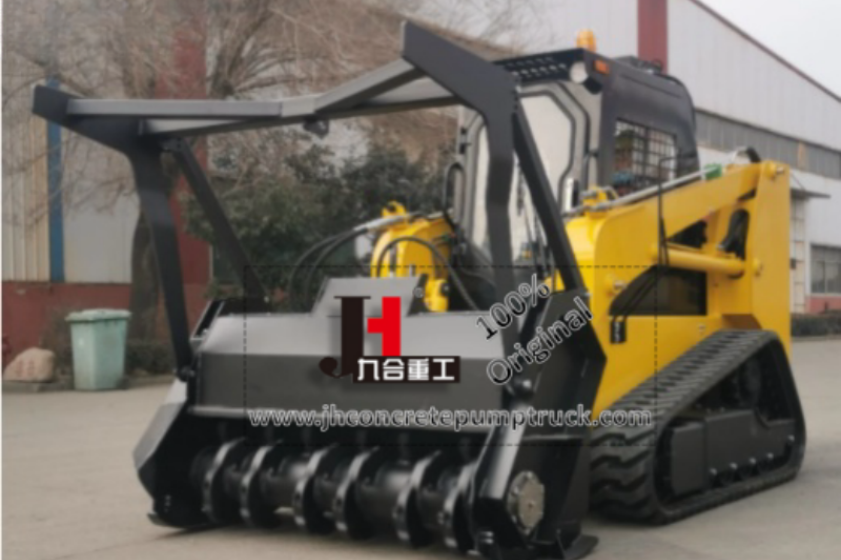News
Measures to eliminate noise from skid steer loaders
Jul. 31, 2024
A skid loader is a small engineering machine that uses the linear speed difference of the wheels on both sides to realize the direction of the vehicle. As an efficient and multifunctional engineering machine, it is mainly used for operations in narrow places such as urban infrastructure, construction sites, factory workshops, warehouses, docks, and even in cabins. Due to the reflection of noise from surrounding buildings, the same skid loader appears to be noisier when working in a small space than when working in an open and unmanned place. It often affects customer satisfaction, driver's operating comfort, and causes environmental pollution. So, where does the noise of the skid loader come from, and how to deal with it?
一. Noise source
For skid loaders, the noise mainly comes from radiation noise and noise in the driver's ear in the cab.
1. Radiated noise: mainly composed of noise generated by exhaust gas discharged by the engine, noise generated by fan rotation, noise generated by parts of hydraulic pumps and hydraulic motors, etc.
2. Noise in the driver's ear in the cab: mainly structural noise caused by the overall vibration formed by the hydraulic travel pump, hydraulic working pump and engine.
The above two types of noise overlap and interact with each other, producing uneven noise.
二. Measures to reduce noise
(1) Treatment of air filter and muffler
1. Change the support method: the two were originally connected to the engine, but can be changed to a method of fixing with the frame, and vibration isolation pads, gaskets, etc. should be installed.
2. It should be connected to the engine (or fan) through an elastic tube.
3. The high-frequency vibration of both is strong and they are in a high-temperature environment, so they need to be treated with heat-resistant damping, such as pasting self-adhesive asphalt damping plates with a thickness of 3±0.5mmm. At the same time, you can consider replacing a suitable muffler.
(2). Treatment of the inner wall of the engine compartment
1. The inner wall of the engine compartment is treated with damping and sound absorption. The sound-absorbing material in the cabin should have the characteristics of heat insulation, high temperature resistance, non-self-ignition, non-flammable, and non-combustible.
2. The ventilation grilles at the air inlets on both sides of the engine compartment are fixed to the frame by two screws, resulting in strong vibration. The connection method can be considered to be improved.
三. Partial treatment of the fan and radiator
1. The rear cover door ventilation grille sheet is coated with heat-resistant damping material.
2. The opening form of the ventilation grille is changed to a shutter type, and sound-absorbing materials are pasted on both sides.
3. The fixing effect of the rear cover door locking mechanism is not good, and the gap at the bottom edge of the rear cover door is large. A thin rubber strip can be used to improve the sealing.
4. Replace the low-noise fan with a large diameter and low speed. If conditions permit, a fan clutch can be installed. The fan can be turned off at a lower temperature, which reduces noise and energy consumption. However, this needs to be considered in terms of space and cost.
四. Engine upper cover door treatment
1. Remove or reduce the upper cover door ventilation grille to reduce transmitted sound.
2. Damping and sound absorption treatment are performed on the lower side of the upper cover door.
3. A thin rubber strip is used to seal the joint surface between the rear edge of the upper cover door and the upper frame of the radiator.







